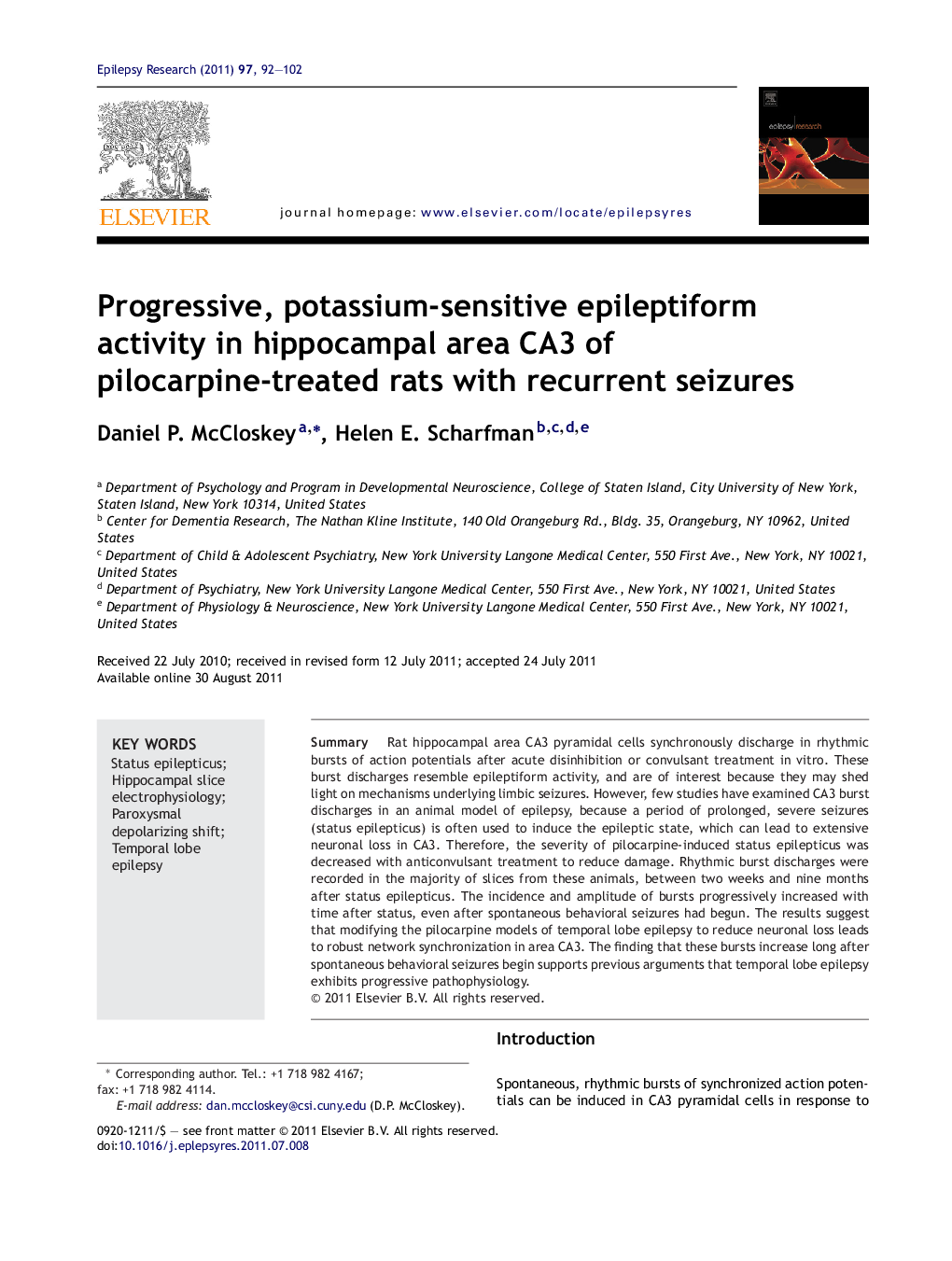| Article ID | Journal | Published Year | Pages | File Type |
|---|---|---|---|---|
| 6016145 | Epilepsy Research | 2011 | 11 Pages |
SummaryRat hippocampal area CA3 pyramidal cells synchronously discharge in rhythmic bursts of action potentials after acute disinhibition or convulsant treatment in vitro. These burst discharges resemble epileptiform activity, and are of interest because they may shed light on mechanisms underlying limbic seizures. However, few studies have examined CA3 burst discharges in an animal model of epilepsy, because a period of prolonged, severe seizures (status epilepticus) is often used to induce the epileptic state, which can lead to extensive neuronal loss in CA3. Therefore, the severity of pilocarpine-induced status epilepticus was decreased with anticonvulsant treatment to reduce damage. Rhythmic burst discharges were recorded in the majority of slices from these animals, between two weeks and nine months after status epilepticus. The incidence and amplitude of bursts progressively increased with time after status, even after spontaneous behavioral seizures had begun. The results suggest that modifying the pilocarpine models of temporal lobe epilepsy to reduce neuronal loss leads to robust network synchronization in area CA3. The finding that these bursts increase long after spontaneous behavioral seizures begin supports previous arguments that temporal lobe epilepsy exhibits progressive pathophysiology.
